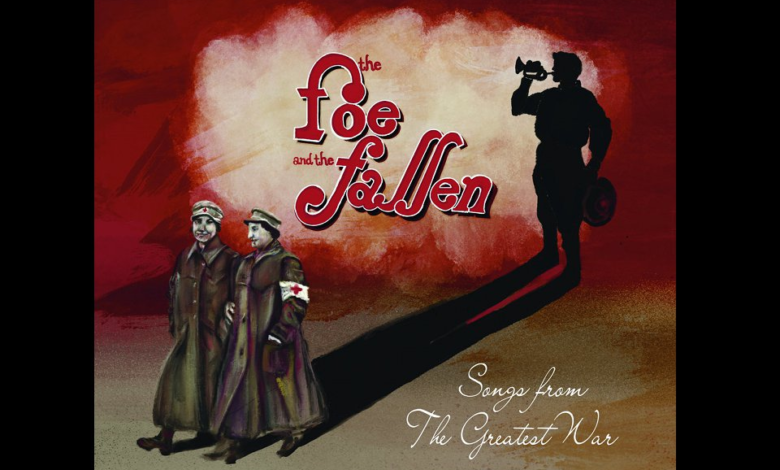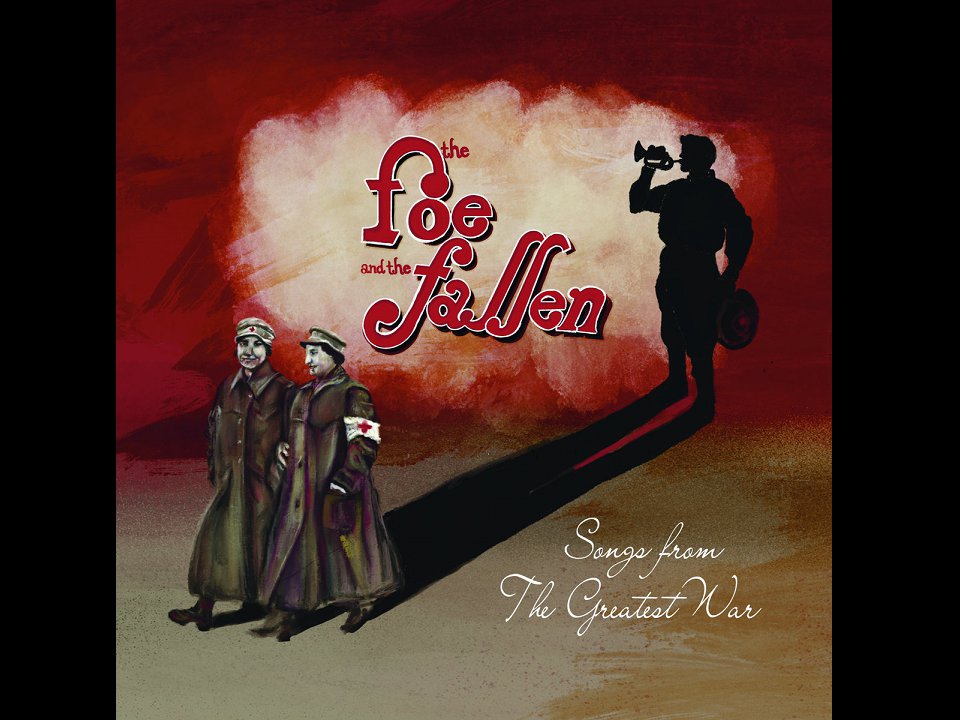‘The Foe and the Fallen’ vinyl release and on stage at the Bur Oak – Isthmus


Ken Fitzsimmons is a musician with a history problem. Lucky for him he can merge the two interests as he did in 2019 when he produced The Greatest War: World War I, Wisconsin, and Why It Still Matters. It was a bombastic rock ’n’ roll history lesson that sold out the Barrymore Theater on the 100th anniversary of Armistice Day. The musical production employed actors, multiple musical ensembles, a video screen — the works — and represented hundreds of hours of research, composition and rehearsals.
It was meant to be a one-off. But on Nov. 9, the album of the show’s music, The Foe and the Fallen: Songs from the Greatest War, will be released on vinyl in a special program with early and late shows at The Bur Oak.
Fitzsimmons is best known for his decades-long leadership of Madison’s Celt-rock outfit The Kissers, whose members were the show’s core band and who will accompany him in the evening of storytelling and live performance of the album’s 11 tracks. The stories are potent and still being told in one way or the other, in the stubborn American struggles of today.
There’s the story of dissent and opposition to U.S. war plans led by then-Wisconsin U.S. Sen. Robert M. La Follette. La Follette’s outspoken opposition to World War I caused newspaper editors around the country to call Wisconsin’s loyalty to the nation into question. These themes are captured in the song “Traitor State,” as penned by Fitzsimmons and his bandmates Kevin Youngs and Bryan Elliott:
I live in Wisconsin but others don’t see it my way.
Come on Wisconsin, sign up and get out of the way.
Don’t fear Wisconsin, dissent is the American way.
This is sedition, Wisconsin the Traitor State.
Then there’s the story of Helen Bulovsky, who grew up on Few Street. She was so moved by pro-war parades and speeches that she signed up to serve. Upon doing so her diary entry read, “I’m the happiest mortal in town.” Once overseas, her heart and her conscience adapted to the cruelty she witnessed and, borrowing from a poem, she pledged to attend to both German and American wounded, “the foe and the fallen.” In Fitzsimmons’ hands her story takes the shape of a dreamy lullaby, “Happiest Mortal.”
“The study of history in general is the study of the human condition,” says Fitzsimmons. “And of course the most extreme side of that condition is war.”
Fitzsimmons has been interested in war history since he was a boy. His grandfather was a World War II prisoner of war, taken near the Battle of the Bulge. Fitzsimmons’ father was a conscientious objector during the Vietnam War. Fellow musicians and history nerds Sean Michael Dargan and John Wedge (The Periodicals) collaborated with him on the research that led to the original stage production. The show’s lavish projected visuals and lighting design were by Jason Fassl.
The Bur Oak show will be scaled down, close and intimate. Fitzsimmons, who has always been attracted to story songs in the tradition of Billy Bragg and Bruce Springsteen, understands that some of these songs need spoken stories to set them up and he’s looking forward to the storytelling as much as the story singing. “The Kissers always want me to talk less,” he says, but “there’s going to be lots of talking. I don’t want to bore people but I really enjoy the storytelling.”
It seems as if this project, if conducted on a campus, could earn Fitzsimmons a doctorate. “When you do it for the love of it,” he says, “you don’t think so much about the work.” For those interested in learning more, he suggests Savage Peace: Hope and Fear in America, 1919, by Ann Hagedorn, and 1919: The Year That Changed America, by Martin Sandler, as well as the podcast The Year That Was.
Meanwhile, Fitzsimmons continues his own research toward a sequel; he’s been writing songs for it since last winter. When the Darkness Comes: 1919 and the Search for Peace is on course to premiere in fall 2025.



